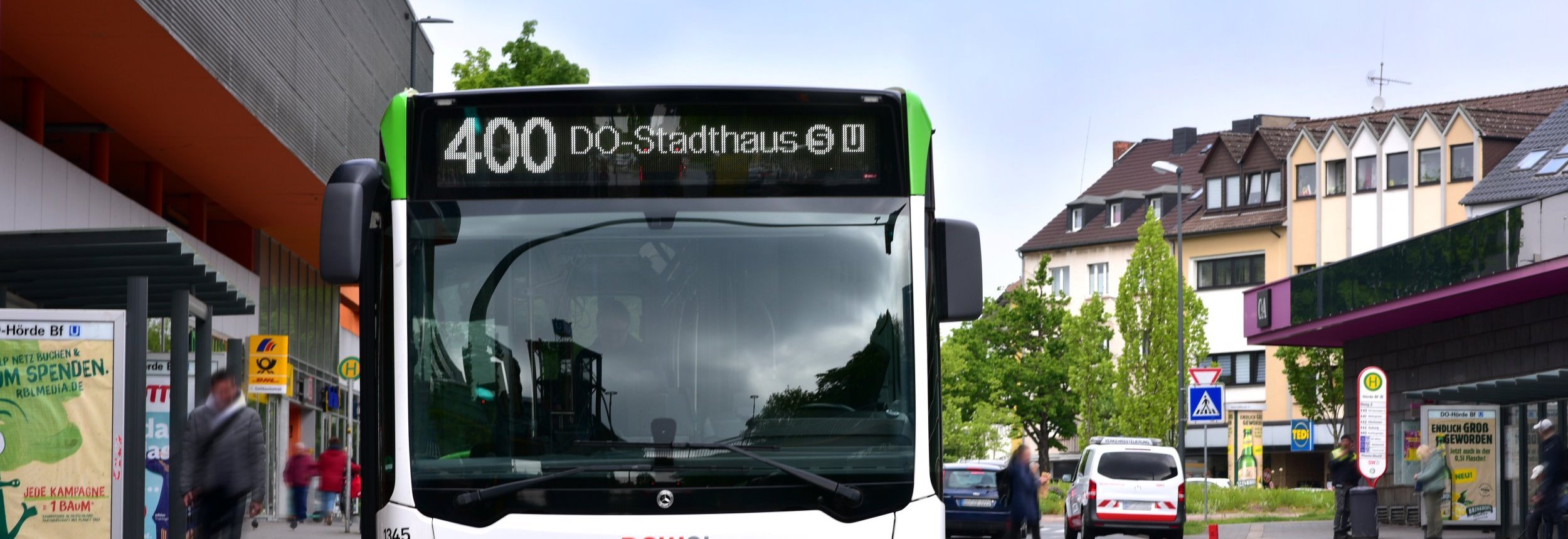{"carouselInterval":6500,"carouselLength":3}
For all those interested, we provide the public draft resolutions of the City of Dortmund for viewing here.
Draft resolution line 400 (PDF)
Draft resolution DOnight (PDF)
Draft resolution traffic routing line 400(PDF)
Proposed resolution introduction of line 400(PDF)
New campaign flanks recruitment drive
DSW21 has already taken on almost 120 drivers this year. And that is far from the end.
DSW21 is getting serious! The transport company is continuing its recruitment drive for the mobility turnaround in Dortmund and the implementation of the Dortmund Mobil concept with the three components DOnight to optimise night-time public transport services, CityTaktPlus to increase the frequency of services on heavily frequented light rail sections and "Line 400". A new campaign is currently underway with radio adverts on 91.2 and poster motifs.
"Make yourself and our environment happy: with a job with us." DSW21 is using this appeal to recruit new drivers for both the bus and light rail sectors. The message is clear: as an employee, you are part of the mobility transition and make an active contribution to climate protection. So you're not just moving people from A to B, you're also making a sustainable difference.

The new bus routes 400 and 401 connect Dortmund city centre in a ring service. They run every 20 minutes, and in the core section there is a dense 10-minute interval. Lines 400 (clockwise) and 401 (anti-clockwise) automatically change numbers at the end points - there is no need to change buses. With the new lines, the 452, 455 and 456 will be cancelled, and the 453 will take over the direct connection from Schüren to the main station. In addition, bus stops will be made barrier-free and bus lanes and cycle lanes will be installed.
The line operates in a continuous ring service, running every 20 minutes as such. New sections to Hörde and Märkische Straße, also every 20 minutes, will also be integrated into the concept. Between Stadthaus, Kreuzstraße, Hbf, Borsigplatz and Funkenburg, the services overlap to form a uniform 10-minute interval.
The subdivision is primarily intended to help our customers:
- Journeys on route 400 with destination "Stadthaus" travel the ring in an anti-clockwise direction. At "Stadthaus" they change to route number 401 and continue to "Funkenburg".
- Journeys on route 400 with destination "Funkenburg" travel clockwise along the ring road. In addition, the sign "Ringverkehr" is displayed on the buses - so it is clearly recognisable that no change is necessary.
- The existing line 452 will be replaced by the ring lines.
- In future, the new line 453 will run directly from Schüren via the Kaiserviertel district to the main railway station. Many destinations will remain accessible - often even more directly or more frequently.
- Lines 455 (Dortmund Hbf - Hörde) and 456 (Dortmund Hbf - Schüren) will be completely cancelled and replaced by the new line 400.
- Lines 412 and 451 will be adapted to provide a better connection to the new 400.
Some of the direct connections will change. Line 452 has been cancelled, but:
- Line 401 will continue to connect the neighbourhood every 20 minutes in a circular service.
- The new line 453 provides a direct connection to the main railway station.
- The bus connections to the light rail every 10 minutes will be retained.


